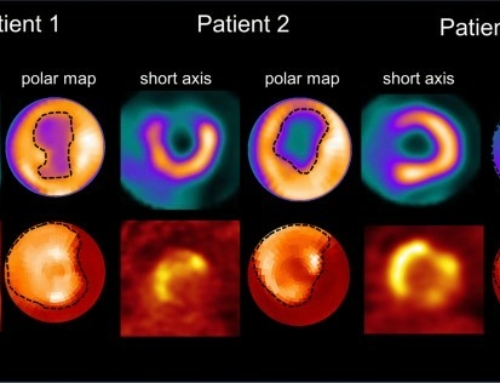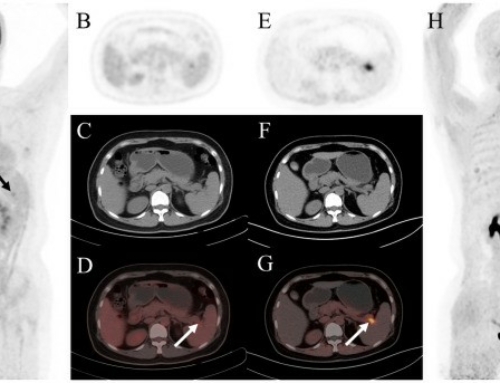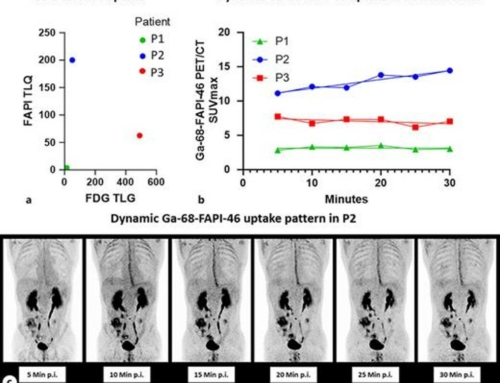Xiang Li, Na Lu, Lili Lin, Yiwen Chen, Shuye Yang, Huatao Wang, Xinyuan Liu, Chengyi Wu, Xing Xue, Xinhui Su, Xueli Bai, Tingbo Liang
Abstract
Accurate diagnosis and staging are crucial for selecting treatment for patients with pancreatic ductal adenocarcinoma (PDAC). The desmoplastic responses associated with PDAC are often characterized by hypometabolism. Here, we investigated 18F-fibroblast activation protein inhibitor (FAPI)–04 PET/CT in evaluation of PDAC and compared the findings with those obtained using 18F-FDG.
Methods
Sixty-two PDAC patients underwent 18F-FAPI-04 PET/CT and 18F-FDG PET/CT. Identification of primary lesions, lymph node (LN) metastasis, and distant metastasis (DM) by these methods was evaluated, and TNM staging was performed. Correlation between SUVmax of the primary lesion and treatment response was explored in patients who received systemic therapy.
Results
18F-FAPI-04 PET/CT identified all patients with PDAC; 18F-FDG PET/CT missed 1 patient. Tracer uptake was higher in 18F-FAPI-04 PET/CT than in 18F-FDG PET/CT in primary tumors (10.63 vs. 2.87, P < 0.0001), LN metastasis (2.90 vs. 1.43, P < 0.0001), and DM (liver, 6.11 vs. 3.10, P = 0.002; peritoneal, 4.70 vs. 2.08, P = 0.015). The methods showed no significant difference in the T staging category, but the N and M values were significantly higher for 18F-FAPI-04 PET/CT than for 18F-FDG PET/CT (P = 0.002 and 0.008, respectively). Thus, 14 patients were upgraded, and only 1 patient was downgraded, by 18F-FAPI-04 PET/CT compared with 18F-FDG PET/CT. A high SUVmax of the primary tumor did not correlate with treatment response for either 18F-FAPI-04 or 18F-FDG.
Conclusion
18F-FAPI-04 PET/CT performed better than 18F-FDG PET/CT in identification of primary tumors, LN metastasis, and DM and in TNM staging of PDAC.


![Efficacy of [68Ga]Ga-FAPI-PET as a non-invasive evaluation method of liver fibrosis](https://sofie.com/wp-content/uploads/2025/06/info.ibamolecular-500x383.png)
![Comparison of [99mTc]Tc-FAPI SPECT/CT and [18F]FDG PET/CT as predictive biomarkers for immunotherapy response in gastrointestinal cancer](https://sofie.com/wp-content/uploads/2025/06/info.ibamolecular-500x383.jpg)


